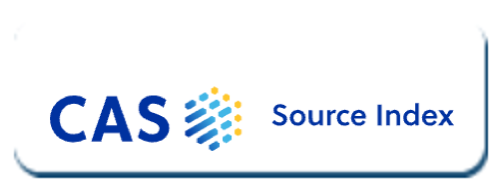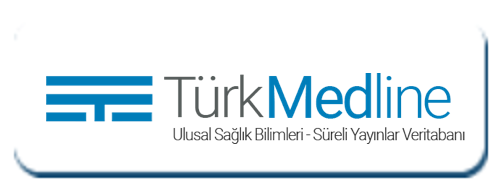Comparison of thoracotomy and thoracoscopy in patients with esophageal atresia - tracheoesophageal fistula
DOI:
https://doi.org/10.5281/zenodo.8139814Keywords:
Anastomosis, Esophageal Atresia, Esophageal Atresia repair, Thoracoscopy, Thoracotomy, Tracheoesophageal AtresiaAbstract
Objective: The aim of this study was to compare the patients who underwent EA-TEF repair with both classical and thoracoscopic methods, and thus to reveal the advantages and disadvantages of both techniques.
Materials and methods: In this study, the files of 45 patients who underwent surgery for EA-TEF at the Erciyes University Faculty of Medicine (EUFM) Pediatric Surgery Clinic between August 2005 and July 2012 were retrospectively examined. Patients were divided into two groups based on the surgical method applied.
Results: A total of 45 patients who presented with EA-TEF and underwent surgical procedures were evaluated. Thirty-one (70%) patients underwent thoracotomy (Group I), and 14 (30%) patients underwent surgery using the thoracoscopic method (Group II). The average gestational age was 37.5 weeks, and the birth weight was 2600 grams. Nineteen (42%) of the patients were female, and 26 (58%) were male. Group I was 39 weeks and 38 weeks in Group II. There was no significant difference in gestational age between the two groups (p>0.05). There was no significant difference between the groups regarding accompanying system anomalies (p>0.05). The time to surgery for patients in both groups was 2 days (p>0.05). The operation time in Group I (95 minutes) was shorter than in Group II (105 minutes) (p<0.05). The time to start gavage feeding after surgery in Group II was shorter compared to Group I (p<0.05). No difference was detected between the groups concerning the time to start oral feeding (p>0.05). No difference was detected between the groups concerning the length of hospital stay (p>0.05). There was no significant difference between the groups regarding the rate of complications (p>0.05). No patient died during surgery. Eleven (35%) of the 31 patients in Group I and 2 (14%) of the 14 patients in Group II died between postoperative days 1 and 25. There was no difference in mortality rates between the groups (p>0.05).
Conclusions: Postoperative complications were detected at similar rates in both groups.
References
Ioannides AS, Copp AJ. Embryology of oesophageal atresia. Semin Pediatr Surg. 2009;18(1):2-11.
Depaepe A, Dolk H, Lechat MF. The epidemiology of tracheo-oesophageal fistula and oesophageal atresia in Europe. EUROCAT Working Group. Arch Dis Child. 1993;68(6):743-8.
Torfs CP, Curry CJ, Bateson TF. Population-based study of tracheoesophageal fistula and esophageal atresia. Teratology. 1995;52(4):220-32.
Spitz L. Oesophageal atresia. Orphanet J Rare Dis. 2007;2:24.
Beasley SW. Esophageal atresia and tracheoesophageal fistula. In: Oldham KT.
Colombani PM, Foglia RP, Skinner MA (eds), Principles and practice of pediatric surgery, Philadelphia: Lippincott Williams & Wilkins 2005, pp. 1039-52.
Goyal A, Jones MO, Couriel JM, Losty PD. Oesophageal atresia and tracheooesophageal fistula. Arch Dis Child Fetal Neonatal Ed. 2006;91:381-4.
Spitz L. Esophageal atresia. Lessons I have learned in a 40-year experience. J Pediatr Surg. 2006;41:1635-40.
Rothenberg SS. Thoracoscopic repair of a tracheoesophageal in a neonate. Pediatr Endosurg Innovative Tech. 2000;4:150-6
Darzi SA, Munz Y. The impact of minimally invasive surgical techniques. Annu Rev Med. 2004;55:223-37.
Holcomb GW 3rd, Rothenberg SS, Bax KM, Martinez-Ferro M, Albanese CT, Ostlie DJ, et al. Thoracoscopic repair of esophageal atresia and tracheoesophageal fistula: a multi-institutional analysis. Ann Surg. 2005;242(3):422-8.
Burford JM, Dassinger MS, Copeland DR, Keller JE, Smith SD. Repair of esophageal atresia with tracheoesophageal fistula via thoracotomy: a contemporary series. The American Journal of Surgery 2011;202:203-6.
Morrow SE, Ashcraft KW. Esophageal atresia. In: Ziegler MM, Azizkhan RG, Weber TR (eds). Operative Pediatric Surgery, New York: McGraw-Hill, 2003 pp.349–54.
Chittmittrapap S, Spitz L, Kiely EM, Brereton RJ. Oesophageal atresia and associated anomalies. Arch Dis Child 1989;64:364-8.
Rothenberg SS. Thoracoscopic repair of esophageal atresia and tracheo-esophageal fistula. Semin Pediatr Surg. 2005;14: 2-7.
Lal DR, Gadepalli SK, Downard CD, Ostlie DJ, Minneci PC, Swedler RM, et al. Midwest Pediatric Surgery Consortium. Challenging surgical dogma in the management of proximal esophageal atresia with distal tracheoesophageal fistula: Outcomes from the Midwest Pediatric Surgery Consortium. J Pediatr Surg. 2018;53(7):1267-72.
Lee S. Basic Knowledge of Tracheoesophageal Fistula and Esophageal Atresia. Adv Neonatal Care. 2018;18(1):14-21.
MacKinlay GA. Esophageal atresia surgery in the 21st century. Seminars in Pediatric Surgery. 2009;18:20-2.
Manning PB, Morgan RA, Coran AG, Wesley JR, Polley TZ Jr, Behrendt DM, et al. Fifty years' experience with esophageal atresia and tracheoesophageal fistula. Beginning with Cameron Haight's first operation in 1935. Ann Surg. 1986;204(4):446-53.
Lilja HE, Wester T. Outcome in neonates with esophageal atresia treated over the last 20 years. Pediatr Surg Int. 2008;24:531-6.
Orford J, Cass DT, Glasson MJ. Advances in the treatment of oesophageal atresia over three decades: the 1970s and the 1990s. Pediatr Surg Int. 2004;20:402-7.
Carachi R, Stokes KB, Brown TC, Kent M. Esophageal anastomosis–an experimental model to study the anastomotic lumen and the influence of a transanastomotic tube. J Pediatr Surg 1984;19:90-3
Lessin MS, Wesselhoeft CW, Luks FI, DeLuca FG. Primary repair of longgap esophageal atresia by mobilization of the distal esophagus. Eur J Pediatr Surg 1999;9:369-72.
Chittmittrapap S, Spitz L, Kiely EM, Brereton RJ. Anastomotic leakage following surgery for esophageal atresia. J Pediatr Surg 1992;27:29-32.
Engum SA, Grosfeld JL, West KW, Rescorla FJ, Scherer LR 3rd. Analysis of morbidity and mortality in 227 cases of esophageal atresia and/or tracheoesophageal fistula over two decades. Arch Surg 1995;130:502-8.
Kovesi T, Rubin S. Long Term complications of Esophageal Atresia and/or Tracheoesophageal Fistula. Chest. 2004;126:915-25.
McKinnon LJ, Kosloske AM. Prediction and prevention of anastomotic complications of esophageal atresia and tracheoesophageal fistula. J Pediatr Surg. 1990;25:778-81.
Biller JA, Allen JL, Schuster SR, Treves ST, Winter HS. Long-term evaluation of esophageal and pulmonary function in patients with repaired esophageal atresia and tracheoesophageal fistula. Dig Dis Sci. 1987;32(9):985-90.
Ghandour KE, Spitz L, Brereton RJ, Kiely EM. Recurrent tracheo-esophageal fistula: experience with 24 patients. J Paediatr Child Health 1990;26:89-91.
Kovesi T, Rubin S. Long Term complications of Esophageal Atresia and/or Tracheoesophageal Fistula. Chest. 2004;126:915-25.
Vos A, Ekkelkamp S. Congenital tracheo-esophageal fistula: preventing recurrence. J Pediatr Surg. 1996;31:936-8.
Jaureguizar E, Vazquez J, Murcia J, Diez Pardo JA. Morbid musculoskeletal sequelae of thoracotomy for tracheoesophageal fistula. J Pediatr Surg 1985;20:511-4.
Chetcuti P, Myers NA, Phelan PD, Beasley SW, Dickens DR. Chest wall deformity in patients with repaired esophageal atresia. J Pediatr Surg. 1989;24(3):244-7.
Basuguy E, Okur MH, Arslan S, Zeytun H, Aydoğdu B. A different approach to leakage of esophageal atresia in children. Ulus Travma Acil Cerrahi Derg. 2020 Nov;26(6):927-31.
Karakaya AE, Guler AG, Dogan AB, Arslan S, Our Experience with Esophageal Atresia and Tracheoesophageal Fistula, Osmangazi J Med. 2021;43(4):358-63.
Downloads
Published
How to Cite
Issue
Section
License
Copyright (c) 2023 Journal of Clinical Trials and Experimental Investigations

This work is licensed under a Creative Commons Attribution 4.0 International License.
![]() The journal is licensed under a Attribution4.0 International (CC BY 4.0).
The journal is licensed under a Attribution4.0 International (CC BY 4.0).











